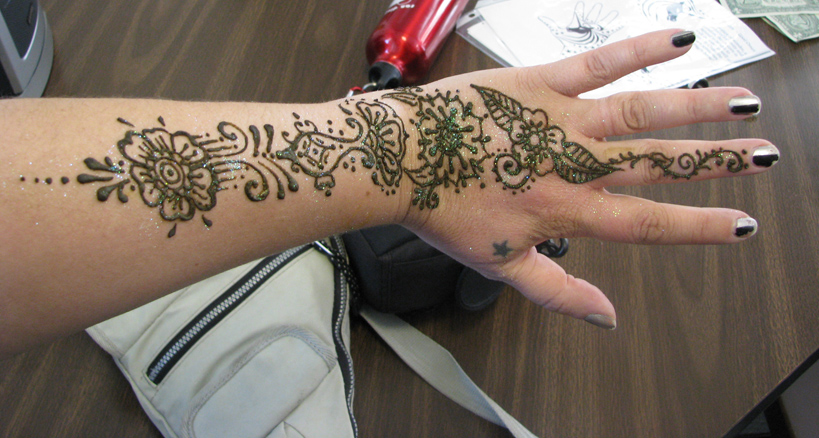 Find what design and pattern works for you and enjoy. The henna tattoo can last two weeks or two months, depending on how they are applied and taken care of. Since they are temporary and not permanent, you can try different designs or apply to different places on the body to find what you like.
Find what design and pattern works for you and enjoy. The henna tattoo can last two weeks or two months, depending on how they are applied and taken care of. Since they are temporary and not permanent, you can try different designs or apply to different places on the body to find what you like.Another benefit of a henna tattoo design is that you can change it up every month or two. They are now applied to visible body parts like the neck, ankles, arms, navel, back, forehead, and toes and fingernails. Traditional henna tattoos were normally applied to the hands and feet, but that has changed. The advantage of a henna tattoo design compared to a permanent one is that it is painless, inexpensive, and the application is so easy that you can make and apply one to yourself. After the paste has been removed and the tattoo has had time to set, normally within 24 hours, it will turn a reddish brown color.
 The longer it is allowed to dry, the darker the stain will be. It's recommended 8 or more hours to dry. It needs to dry for a long time and eventually flake off. When the design or pattern is freshly applied, it will be an orange brown color.
The longer it is allowed to dry, the darker the stain will be. It's recommended 8 or more hours to dry. It needs to dry for a long time and eventually flake off. When the design or pattern is freshly applied, it will be an orange brown color.Or for those that are starting out and are not as confident, there are useful stencils. For those that have practiced or are good at creating designs and patterns, it's possible to apply it by freehand. The paste is then applied to the skin through a cone or applicator bottle. The powder is then combined with a liquid like eucalyptus or clove oil to form a paste. First the dried leaves of the henna plant are ground into a powder.
 The process of creating a henna tattoo design is pretty simple. But recently all that has changed and now henna body art is commonly displayed in the Western world. It used to only be found mainly at weddings and some celebrations in India, Sudan, Egypt, and Pakistan. The tradition of henna tattoo design goes back thousands of years and has been passed down from generation to generation in the Middle Eastern culture.
The process of creating a henna tattoo design is pretty simple. But recently all that has changed and now henna body art is commonly displayed in the Western world. It used to only be found mainly at weddings and some celebrations in India, Sudan, Egypt, and Pakistan. The tradition of henna tattoo design goes back thousands of years and has been passed down from generation to generation in the Middle Eastern culture.



No comments:
Post a Comment